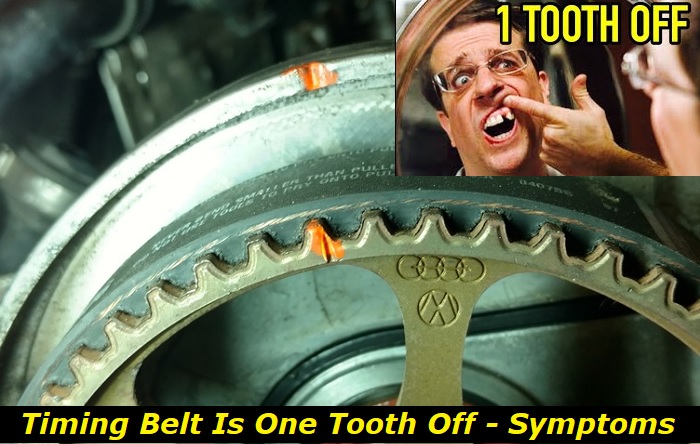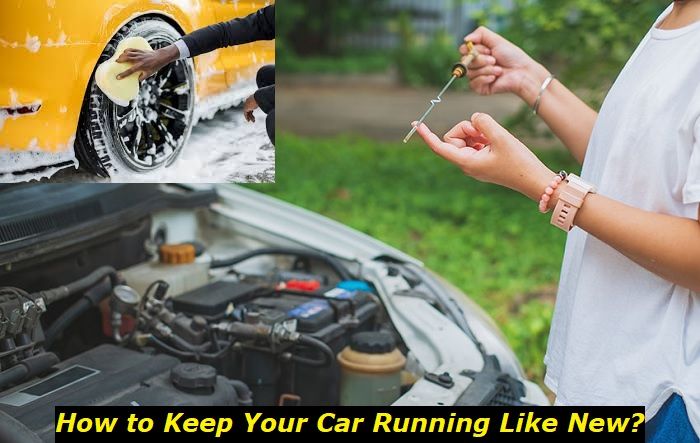Synchronization in the engine is crucial. The camshaft and the crankshaft should move in unison to allow a complete combustion process. If the two work uniformly, the valves and the pistons will work in a favorable environment. Therefore, facilitating proper fuel and air combustion.
Engine timing issues highlights
- Level of importance:High
- Commonreasons:Age, mileage, internal engine problems
- DIY inspection:Impossible
- DIY repair:Impossible
- Price for repair:$550 - $1,000
- Can you drive?In most cases, no
- Ways to fix:Replacement of affected parts

What's a Timing Belt?
Timing is your engine's lifeblood. Your engine's internal combustion system cannot work without proper timing.
It appears the toothed belt is very crucial. It's not just a belt. Its primary role is to synchronize the camshaft (opens or shuts the exhaust and inlet valves) and the crankshaft (rotates the pistons). The valves and piston will work flawlessly if the cam and crank are in sync. The toothed belt ensures the two function properly.
Your car needs power as it moves. The power comes from the combustion of air and fuel mixture. The system will need just enough fuel and air mixture to generate it. The mixture's flow rate will rely on your timing belt synchronization. The valves will work continuously to let the air-fuel mixture into the combustion system, push the piston as the mixture ignites, and let out the exhaust gases. The toothed belt will need all its teeth to match up with the teeth on the gears to ensure everything is in sync within the combustion chamber.
As you can tell, the timing belt operates under immense stress and strain to get the engine working and moving. It's not surprising for the belt to hit a snag or jump a tooth. Therefore, you may have to repair or replace it several times to run a healthy engine.
Signs the Timing Belt is Off Tooth
Newer vehicles can go up to 100,000 miles before needing a time belt replacement. Your toothed belt will need its teeth in an operational condition to ensure every component in the combustion chamber is in sync.
However, your timing belt may accidentally break, lose, or jump a tooth before hitting 100,000 miles. A single-off tooth may cause the valve to shut before letting the inlet release enough air-fuel mixture or letting out all the exhaust gases. It may result in power loss or exhaust issues. Therefore, it's crucial to keep on monitoring your toothed belt.
You may encounter these problems if the belt is missing a tooth.
- Strange Noises from the Engine
You might hear ticking noises if the toothed belt experiences tooth displacement.
The inner part of the timing belt has teeth (ridges). They correspond to the teeth on the gears. So, they will run over matching gear teeth each time the belt moves. Each tooth contact causes synchronous pulling and pushing of the pulleys.
When the belt misses a tooth, there will be a mismatch of camshaft and crankshaft movement resulting in a "squeals" or a "chirping" sound. If it's repetitive, you may have to change the toothed belt. Repetition is a clear indication that you're dealing with worn-out teeth.
- Power Loss
When the belt misses a tooth, it may slip the gears. It will cause an asynchronous movement. Hence, causing a timing issue. When the timing is off in your engine, your car is bound to experience a power loss. You'll notice stalling, rough running, or out-of-the-norm idling. Your acceleration presses may become more aggressive.
- Engine Misfires
The slips often manifest as engine misfires. The cylinders won't fire at the right time because of the slips. Therefore, causing the engine to stumble.
Your engine requires everything to run in sync for it to operate normally.
- Check Engine Illumination
A sudden misalignment on your toothed belts and gears will evoke the check engine light. Any issue in the engine may trigger an illumination on your dashboard. In some cases, you may see a crank or camshaft error code.
- Troubled Starts
You may notice trouble starting your car when the belt keeps slipping or skipping a tooth. If it's completely broken, your engine may fail to start.
Why the Misalignment?
- Tear and Wearing
Over time the ridges on the belt wear off, making it hard for the belt to hold onto the gears. Lose hold may eventually cause a slip, making the belt miss a tooth.
- Low Tension
Low tension on the belt causes the teeth to ride out of the gears. It should operate in constant tension to ensure a firm engagement between the gears and the ridges on the inner side of the belt. The rigidity will produce enough power to move all the pulleys simultaneously.
- Damaged Gear
The belt runs through gears as it pulls and pushes the pulleys in the engine. The damage may result in your timing belt jumping a tooth. Most of these damages occur due to hitting a foreign object. Or maybe they are worn out.
How To Fix Tooth Misalignment
You can repair or replace a failing timing belt. Here are two ways to fix timing belt teeth slips.
1) Tighten the Timing Belt
A loose timing belt often causes the belt to miss a tooth. You'll need to measure the belt's tension before tightening it. You can either use a digital or a mechanical one. If it's loose, make it tight.
Follow these steps to tighten the belt.
- Remove the timing cover.
- Rotate the crankshaft. Ensure it hits the timing mark.
- Get a wrench and place it on the bolt securing the belt's tensioner. Rotate it clockwise until you feel some resistance. It will release the tension on the timing belt.
- Loosen the locking bolts. Don't remove the bolts. Just turn it anticlockwise until you feel some resistance.
- Give the wrench two complete clockwise turns. Don't over-tighten the belt. Once you hit the timing mark, stop the turns.
- Remove any foreign object from the engine and put back the cover.
2) Replace the Timing Belt
You may have to change the toothed belt if it is worn out or still experiencing problems after fixing it.
You may also have to swap the timing belt if your car has covered more than 60,000 miles. Also, check whether your vehicle has any record of timing belt replacement. Replace the belt if you're yet to do a replacement. Also, you may have to replace the belt if you observe any of the following issues with your car.
- An overheating engine.
- Vibrations as you drive your car.
- Oil leakage.
- Black smoke.
- Loss of voltage.
Ensure you read the car's manual before removing and installing a new timing belt.
- Step 1: Cool Down the Engine
Always work on a cold engine. Give it time to cool down before replacing the toothed belt.
- Step 2: Detach the Negative Terminals from the Battery
It's crucial to detach the negative terminals when working on the engine, be it manual or automatic. It prevents electric shocks as you work on it. So, turn off your car, locate the battery, and remove the cable that connects to the negative terminal. Ensure it doesn't touch the battery. Any contact with the battery may activate the engine's electrical system.
- Step 3: Remove the Timing Cover
Let the timing belt be in plain sight.
Remove the cover to see the worn-out timing belt. Use a wrench to unscrew all the bolts holding the timing cover. Remove it and put it aside.
- Step 4: Remove the Worn Out Timing Belt
Use the wrench or a pair of pliers to remove the timing belt. Be careful while doing it. Also, ensure the timing marks align before removing the timing belt.
- Step 5: Put in a new Time Belt
Once the old one is out, install a new one. Run the new belt over the pulleys. Start with the crankshaft. Move in an anticlockwise direction as you lay it.
Don't force the belt to fit into the gears. But ensure the belt's ridges correspond with the gears. Also, ensure the shafts are aligned.
You'll need to adjust the tensioner once the belt is in place. Slacken the tensioner bolt using a wrench. Turn it counterclockwise to relieve tension on the belt. After balancing it, tighten the belt. Use a wrench but don't over-tighten them. It may damage your engine.
Start your engine to see if you've fixed the timing issues. You can always follow these steps if you notice something wrong with your timing belt.
A Recap
Time belts are very crucial to your engine. You'll have to regularly assess your belt's tension, clean and lubricate the engine, and perform frequent maintenance. Replace it when you notice any indicators of damage or wear. You risk irreversible damage to your motor if you ignore the warning signs of a jumping or a damaged timing belt.
About the authors
The CarAraC research team is composed of seasoned auto mechanics and automotive industry professionals, including individuals with advanced degrees and certifications in their field. Our team members boast prestigious credentials, reflecting their extensive knowledge and skills. These qualifications include: IMI: Institute of the Motor Industry, ASE-Certified Master Automobile Technicians; Coventry University, Graduate of MA in Automotive Journalism; Politecnico di Torino, Italy, MS Automotive Engineering; Ss. Cyril and Methodius University in Skopje, Mechanical University in Skopje; TOC Automotive College; DHA Suffa University, Department of Mechanical Engineering






Add comment